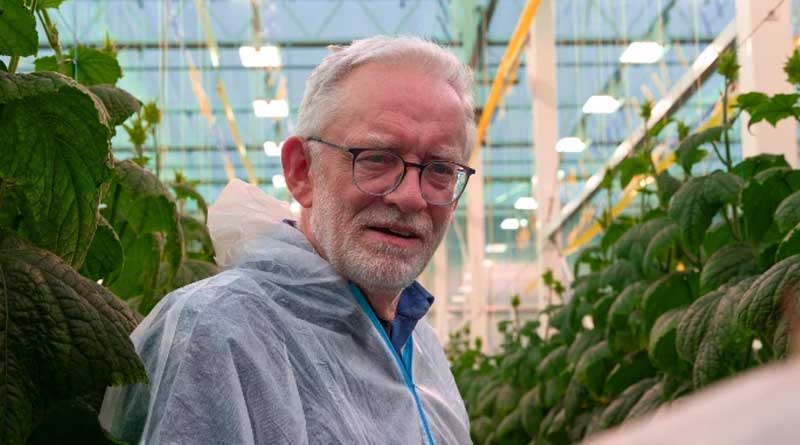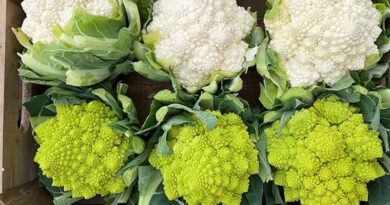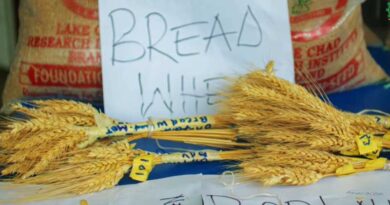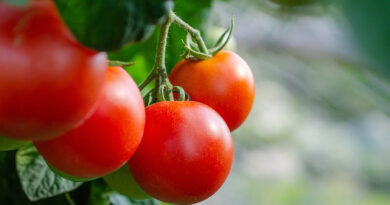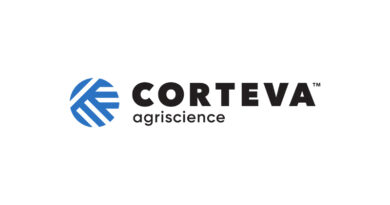The changing landscape of the pickling cucumber industry
10 April 2024, US: A market that evolves continuously needs innovations. Each market seeks certain traits that help them to reach their best potential in terms of production and quality to meet the needs of the entire chain. A company such as Rijk Zwaan stands at the beginning of this chain: Rijk Zwaan breeds for new traits to cross in varieties to meet these needs. But how do they accomplish this? How do they stay informed about current events in North America while being active in so many different countries? What are key traits to focus on right now? And what does this mean for you – as a partner in this chain? Discover this when you delve into the article below.
Eric Bal – Head of Breeding Cucumber – visits the lighted pickling cucumber crop at the headquarters of Rijk Zwaan in the Netherlands on a sunny Fall day. This is the location where the breeding of most cucumber types starts, such as pickling cucumbers, long, midi, and mini cucumbers. He expertly examines the crop, drawing on years of experience and knowledge. Eric has been working at Rijk Zwaan since 1985, always in the cucumber department. Together with Eric and the breeding team we discuss the challenges in pickling cucumber breeding for North America.
“Freedom and a high level of responsibility are words that come to mind when I think about Rijk Zwaan,” Eric explains. Rijk Zwaan not only takes good care of the crop but also prioritizes its employees and follows a bottom-up approach. There is a culture of innovation, where its employees initiate new ideas and where there is room to develop new and improved varieties. Together with the other departments, from Breeding to Sales, everyone works together to make a variety a success.
It does not come as a surprise, that a key word within Rijk Zwaan is teamwork. “In the 38 years that I’ve worked here, I’ve never been bored. The job, the work we do, it is so varied.” Rijk Zwaan does not stand still, neither does the world of pickling cucumbers.
Innovations in the pickling cucumber segment
In the past, Rijk Zwaan’s pickling cucumber assortment only contained varieties that were sold mainly in Europe, where the crop is known as gherkin instead of pickling cucumber. In 2005, Rijk Zwaan bought a small breeding program from the University of Wisconsin. Eric was involved in this deal. This contributed to an improved American pickling cucumber assortment, where Rijk Zwaan focused on its strengths such as earliness, yield, excellent processing quality and parthenocarpic varieties. Every year, 30% of Rijk Zwaan’s turnover is reinvested in R&D. What does this mean for Rijk Zwaan’s innovative power in pickling cucumbers? “This means that we have the opportunity to invest in better greenhouses, research trials and new, improved equipment. Additionally, we have started to work in various markets. In addition to breeding varieties for open field, hand harvest and machine harvest growers, we also have varieties for vertical growing which is common in the Balkan countries and India. We can invest in these different markets and we make sure that we can offer the best varieties combined with important traits, such as parthenocarpy,” Eric describes.
Is parthenocarpy the future?
Rijk Zwaan only breeds parthenocarpic varieties nowadays and stopped with creating new seeded varieties, at least in the pickling cucumber segment. Parthenocarpy can be defined as the naturally induced production of fruit without fertilization, which makes the fruit seedless. Lenaig Adam, Penélope (Penny) Enriquez Serna and Ramon de Bont are Breeders of Rijk Zwaan for pickling cucumber, located in the Netherlands. All three of them focus on the parthenocarpic trait, regardless of their segment. Although each breeder has its own specific segment focus, teamwork and information sharing are top priority. They are always working with another breeding colleague, so that trials can be evaluated together. Rijk Zwaan still has one older variety in its assortment, which is seeded. But why does Rijk Zwaan mainly have it eyes set on parthenocarpic varieties?
Lenaig smiles confidently, “we simply believe that parthenocarpic varieties perform better.” Penny and Ramon agree immediately and nod their heads without hesitation. In the case of parthenocarpic varieties, growers do not depend on pollinators.
“With a parthenocarpic variety, your main concern is to keep the plants healthy and give good fertilization,” Lenaig explains. Does this mean that Rijk Zwaan’s competition does the same in North America? While pollinated varieties are still available in North America, in Europe, most companies focus only on parthenocarpic varieties. Penny, who primarily breeds for the North American market, highlights an additional benefit of parthenocarpic varieties, stating, “another advantage is the lack of seeds in your final product. Take the slices on burgers as an example. When the quality is as good as our variety Gershwin, you can have perfect slices of pickles.” When Eric and Penny explain how they can win over (potential) clients to purchase parthenocarpic varieties in the future, they both say the same, “come and take a look! Talk with other growers and find out what they think of parthenocarpy and what their experience is.”
For the North American market, Rijk Zwaan focuses on hand and machine harvest varieties. One important trait, particularly in machine harvest, is the predictability of yields and days to maturity. This a trait where the breeding team focuses for North America and one which has improved considerably since the early varieties.
“One day can make a big difference for American growers, that is why it is so important to have a plant type that adapts to the harvester. This is what we have set our eyes on,” Penny illustrates. Machine harvest can partially solve a large problem- lack of labor. Therefore, machine harvest will remain an important aspect now and in the future.
Would you like to know more on how Rijk Zwaan stays connected with North America? Read the full article of the changing landscape of the pickling cucumber industry.
Also Read: ADAMA Launches New Multi-Crop, Broad Spectrum Fungicide Maxentis®
(For Latest Agriculture News & Updates, follow Krishak Jagat on Google News)

